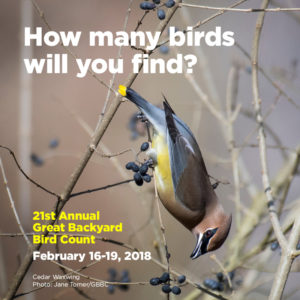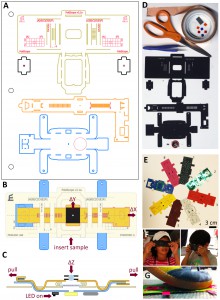 2018 has been designated “The Year of the Bird”, and beginning today, Friday, February 16, 2018, bird lovers around the world will grab their binoculars, fill their bird feeders, update their eBird app, and look toward the skies. The 21st Annual Great Backyard Bird Count, one of the largest and longest running citizen science projects, begins today, and you can be part of this grand event of data collection.
2018 has been designated “The Year of the Bird”, and beginning today, Friday, February 16, 2018, bird lovers around the world will grab their binoculars, fill their bird feeders, update their eBird app, and look toward the skies. The 21st Annual Great Backyard Bird Count, one of the largest and longest running citizen science projects, begins today, and you can be part of this grand event of data collection.
All it takes is a mobile device (or computer) to log your results, an account at gbbc.birdcount.org , and 15 minutes of your time during the four-day event.
Can’t tell a red-tailed hawk from a red-winged black bird? That’s okay. The GBBC web site provides a handy online bird guide. The web site also provides a guide for tricky bird IDs, including: Which Red Finch is it, Identifying Some Common Sparrows, and Identifying Doves.
I recently spent some time talking to Brian Schneider, one of the educators at the Aldo Leopold Nature Center in Monona, WI, to get some tips for first-time birders. Continue reading “Get Out and Count: The Great Backyard Bird Count of 2018”


